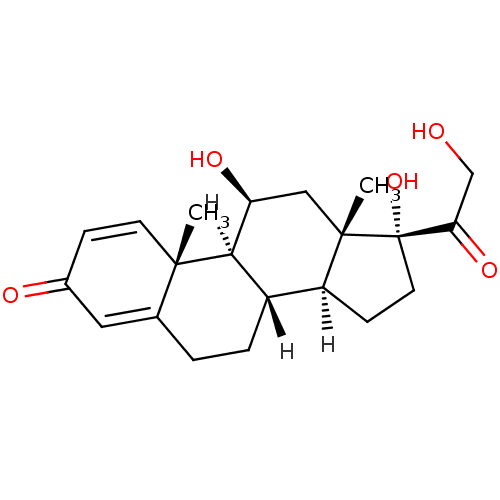BDBM19190 (1S,2R,10S,11S,14R,15S,17S)-14,17-dihydroxy-14-(2-hydroxyacetyl)-2,15-dimethyltetracyclo[8.7.0.0^{2,7}.0^{11,15}]heptadeca-3,6-dien-5-one::CHEMBL131::Delta-Cortef::Deltacortril::Prednisolone::US10196374, Prednisolone
SMILES [H][C@@]12CC[C@](O)(C(=O)CO)[C@@]1(C)C[C@H](O)[C@@]1([H])[C@@]2([H])CCC2=CC(=O)C=C[C@]12C
InChI Key InChIKey=OIGNJSKKLXVSLS-VWUMJDOOSA-N
Activity Spreadsheet -- Enzyme Inhibition Constant Data from BindingDB
 Found 4 hits for monomerid = 19190
Found 4 hits for monomerid = 19190
Affinity DataKi: >5.00E+3nMAssay Description:Displacement of fluorescently labeled ligand from ERalpha receptor by fluorescence polarization assayMore data for this Ligand-Target Pair
Affinity DataKi: >5.00E+3nMAssay Description:Binding affinity to ERalpha by fluorescence polarization assayMore data for this Ligand-Target Pair
Affinity DataIC50: >1.00E+4nMAssay Description:Binding affinity to ERalpha (unknown origin) by FP assayMore data for this Ligand-Target Pair
Affinity DataIC50: >1.00E+5nMAssay Description:Binding affinity to human ERalpha expressed in Sf9 cells by fluoligand binding-based fluorescence polarization methodMore data for this Ligand-Target Pair
